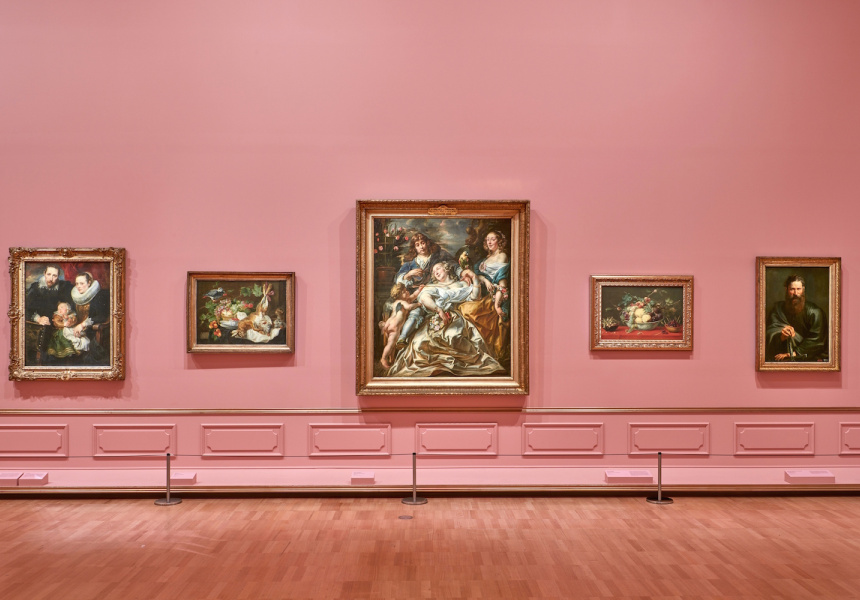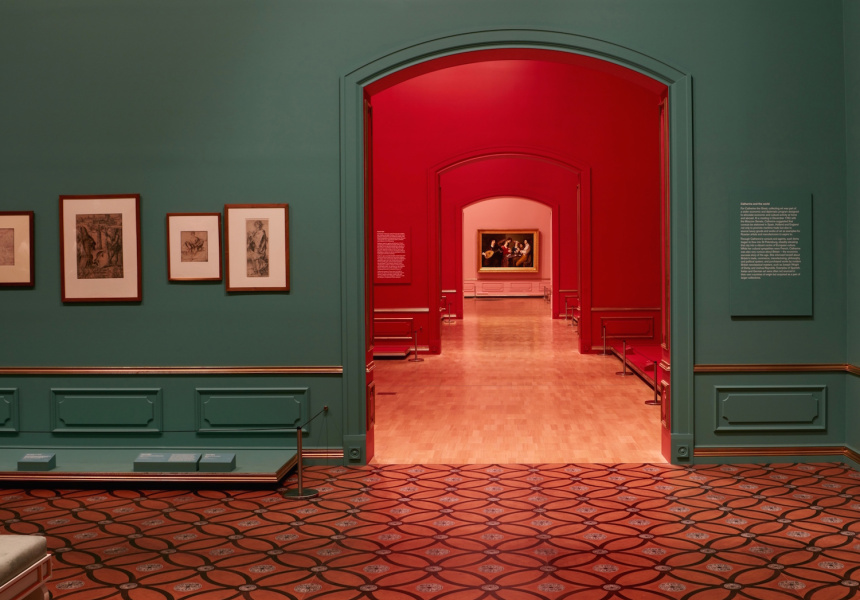No need to visit St Petersburg: the NGV has transformed its gallery into one of the oldest, largest, and most-visited museums in the world, the Hermitage. Built for Catherine the Great, a monarch inspired by the Enlightenment and the Renaissance, as well as a love of education, art and culture, the Hermitage houses one of the finest collections of art in the world. It is an incredible monument to the wealth and power that Russia once held. Two-and-a-half centuries since its foundations were laid, the museum is sharing its treasures with Melbourne, and many of them have never left Russia before.
Part of the Winter Masterpieces series, Hermitage: Masterpieces from the Hermitage is a story of the legacy of Catherine the Great, the Russian Empress who came to power in 1762. Born Sophie Friederike Auguste von Anhalt-Zerbst-Dornburg, she made significant social and cultural changes as a ruler, earning her the moniker “Catherine the Great” during her lifetime. There were many sides to the Philosopher Queen, though, and many titles she could have been endowed with. So to give you a picture of the kind of woman and Queen Catherine the Great was we’ve suggested a few alternatives.
Catherine the Party Queen
Stay in the know with our free newsletter. The latest restaurants, must-see exhibitions, style trends, travel spots and more – curated by those who know.
SIGN UPCatherine kept a daily schedule of strong coffee, writing for two hours, and briefings in the morning, followed by lunch, responding to mail and reading or examining her collection in the afternoon. But her evenings were reserved for the real fun; entertaining guests in the Hermitage and sometimes her private rooms with theatre, performances, talks, etc. The standout element to her entertaining was her mechanical flying table which rose up to the ceiling with guests’ desired dish selections (but without the guests. It wasn’t Mary Poppins), and descended with the dishes served. The table rose and fell between courses and allowed her guests to speak freely without worrying about being overheard by servants.
Catherine also had guest rules that would stand up at any decent party today which included: “All ranks shall be left outside the doors, similarly hats, and particularly swords”, and “Be merry, but neither spoil nor break anything; nor indeed gnaw at anything”. Catherine also had no time for bores: “Do not sigh or yawn, neither bore nor fatigue others”. She sent everyone home by 10pm, which meant no one found themselves staring into an empty glass asking why they were still there and questioning their life choices.
Catherine the Philosopher
Catherine the Great is also known by another designation, the Philosopher Queen. Catherine clearly viewed herself in this way, too, with several artworks of her as Minerva, the Roman goddess of wisdom, the arts and trade (keep an eye out for the cameo in the first room of the exhibition).
Being a great reader and known for her wit, Catherine was all over the Age of Enlightenment. She corresponded with leading French philosophers of the day including Voltaire, whom she never met but viewed as her “teacher”. Taking on many of his ideas about government, Catherine sought to modernise Russia with the first steps toward a parliament, rewriting out-dated laws around freedom of the press and religion, and starting a number of social initiatives, such as orphanages and schools for women.
She also took on the advice of her philosopher mates, buying French master Jean-Baptiste Greuze’s The Paralytic at the suggestion of Denis Diderot, who spent five months with her at one stage. The painting features in the exhibition and hangs by several of Greuze’s preparatory drawings, which she purchased as well, because she was fascinated by the artistic process.
Catherine the Disrupter of Industry
Being Queen puts you in a financially fortunate position and Catherine used her wealth to culturally lift Russia through the arts. During her lifetime, Catherine amassed 3,000,000 pieces in her collection including sculptures, decorative art objects, 15,000 drawings, 4,000 paintings, and 10,000 engraved gems (cameos). While she enjoyed the works on a personal level, it was her intention to develop an, “Encyclopaedic collection of art,” says NGV’s curator of international art, Laurie Benson. These objects were also brought into Russia to raise the cultural bar in her own country and were, “Crucial to her desire to transform Russia into a modern state, through good government, economic and educational reforms,” says Benson.
One example on display in Hermitage is the cameo dinner service created by the Sevres Porcelain Factory in France. She purchased the set for her lover, Prince Grigory Potemkin, but told the factory it was for her (“in order to ensure that [it was] beautiful”). The 797-piece set served dinner, dessert and coffee for 60 people, and she put it to good use on her flying table. The technical difficulty of creating perfectly round plates meant that pieces that weren’t to the highest standard had to be destroyed and remade. The set cost the equivalent of US$3,000,000 and took 24 years to pay off, making it the most expensive example of decorative arts in the 18th century.
Catherine the International Queen
Catherine wasn’t restrictive when it came to the geography or era of where and when her collected items came from. Works came from a significant chunk of the known world. The Hermitage exhibition is even set out as eight mini-exhibitions divided by nationality, including Italian, Flemish, Dutch and French schools of art, as well featuring German, English and Spanish works. Catherine acquired a great many of the Old Masters, from Titian and Rubens, to van Dijk, and 59 Rembrandts (four of which are now on show in the NGV), but also often collected works from contemporary artists who were virtually unknown at the time but would become masters in their own right.
In the final room of the exhibition, we see more of Catherine’s personal effects –decorative gold and silverware. These pieces are so fine Benson describes them as being seemingly “spun by spiders”. Here there sits a crab-shaped rouge box composed of threads of filigree and her personal mirror inlaid with more than 400 diamonds as part of her toilette-set at the Winter Palace.
Hermitage: Masterpieces from the Hermitage: The Legacy of Catherine the Great is on at the National Gallery of Victoria from July 31 to November 8.


